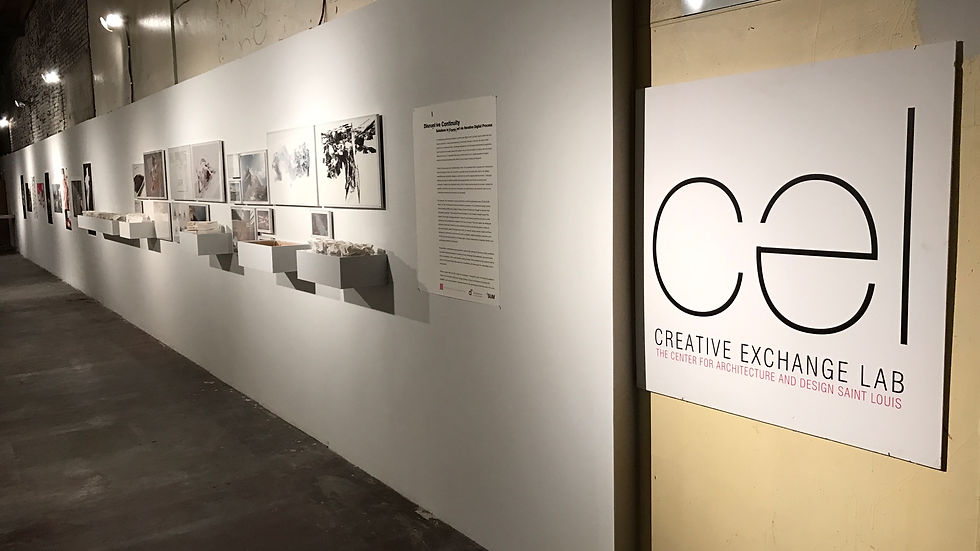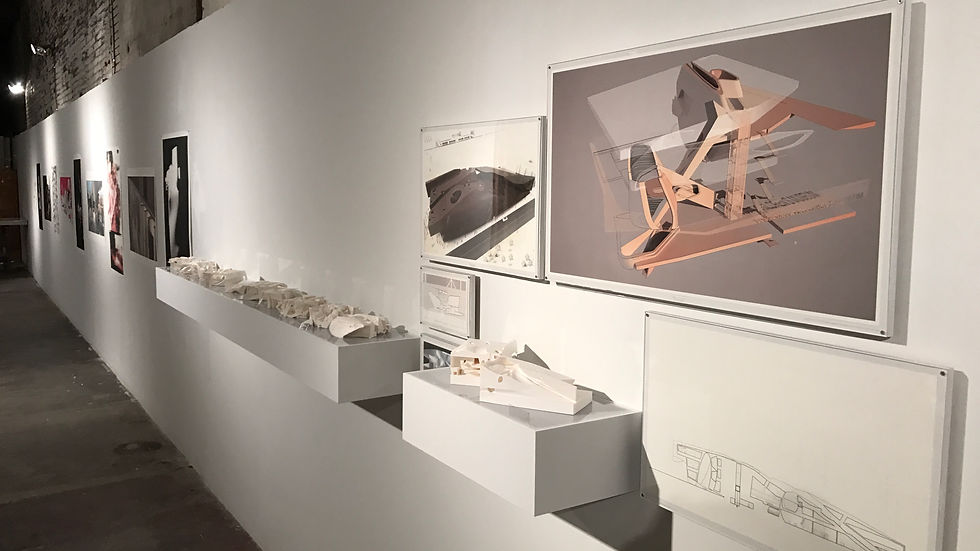DISRUPTIVEcontinuity | Solo Exhibition at the Creative Exchange Lab: Center for Architecture and Design, St Louis (2017)
Size:
34 m
112 ft
(Linear Wall)
Design:
2017
Program:
Models, Model Stands, and Drawings
The exhibition foregrounds research regarding the intersection between academic/professional contexts where computation informs process & workflow. The title of the exhibition "Disruptive Continuity" is named after an exercise that Martin Summers has developed within his academic studios to teach students a flexible, rapid, iterative workflow that allows them to respond to complex problems in creative ways and to develop their own intuition. This process is a translation of his own methodologies as a pedagogical model. Excerpt from: Martin Summers, Dossier for Tenure and Promotion, pg 302
"Layered into this agenda are advanced professional
workflows without the additional constraints one
would find in a typical project brief, like program, site,
context, circulation, budget, etc. This separation from
day-to-day constraints of practice is a distinct advantage
provided by the academic context; however, it is used
subversively here to teach methodologies that are
necessary in professional practice. At its core, Disruptive
Continuity introduces a way of thinking that leverages
intuition and reason simultaneously in an adaptive and
flexible methodology to address the complex challenges
architects face. This is delivered through an initial
framework of formal typology and Gestalt relationships.
The combination of systems must be visually read and
evaluated for its coherency, formal legibility, formal
camouflage, intentional misdirection, local vs. global
decision making, and the discoveries made through
an intensive, iterative process. The resultant whole is
greater than the sum of its parts. It is evaluated at this
scale for its ability to appear coherent and logical while
expressing difference and conditions of simultaneity,
conditions that remain just beyond our ability to
categorize and reduce them to their constituent parts."
The work from an exceptional group of students is put into context with the professional work from PLUS-SUM Studio, intermixing the two as a curatorial opportunity to draw out distinctions and similarities. Within this mixed context, an observer can make their own assessment of the quality and effectiveness of the broader agenda, which also reflects Martin's attitude toward the project designs from PLUS-SUM Studio. An occupant doesn't necessarily have to understand all the ideas of the project, they simply must be intrigued enough by it to ask questions and discover their own answers as to why the design is the way it is. Their experience is as powerful as the intentions behind the work.
Images:





Drawings:



Plan of space for exhibition

